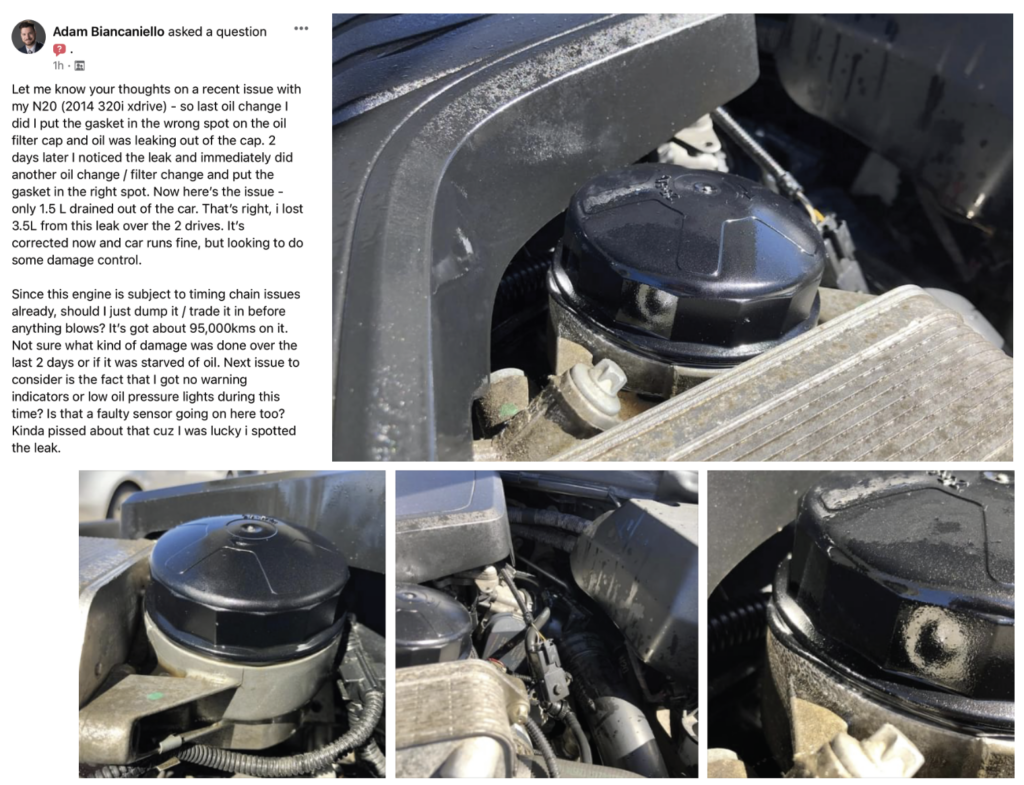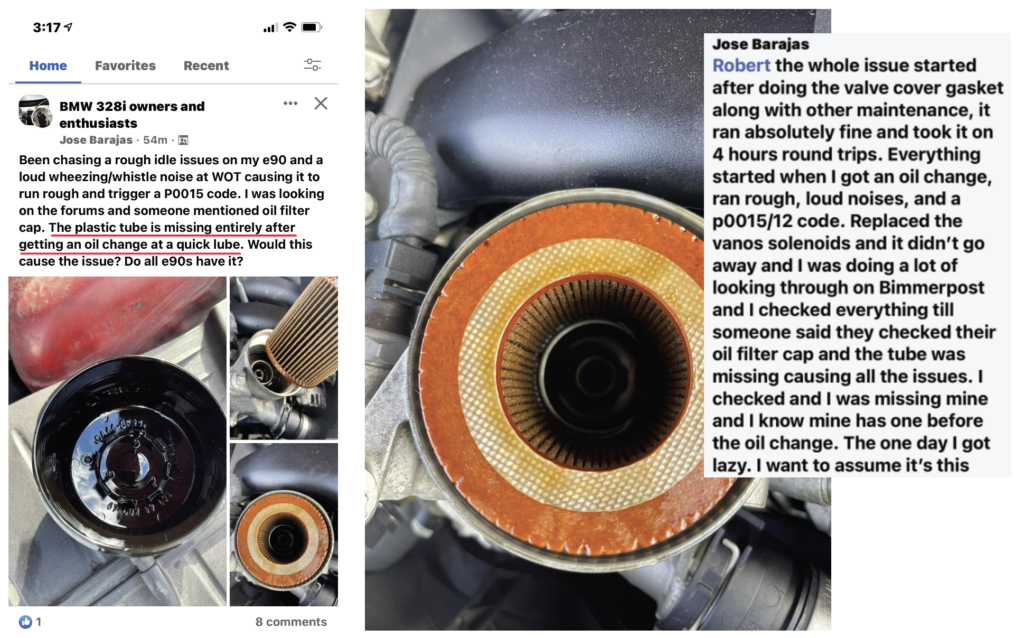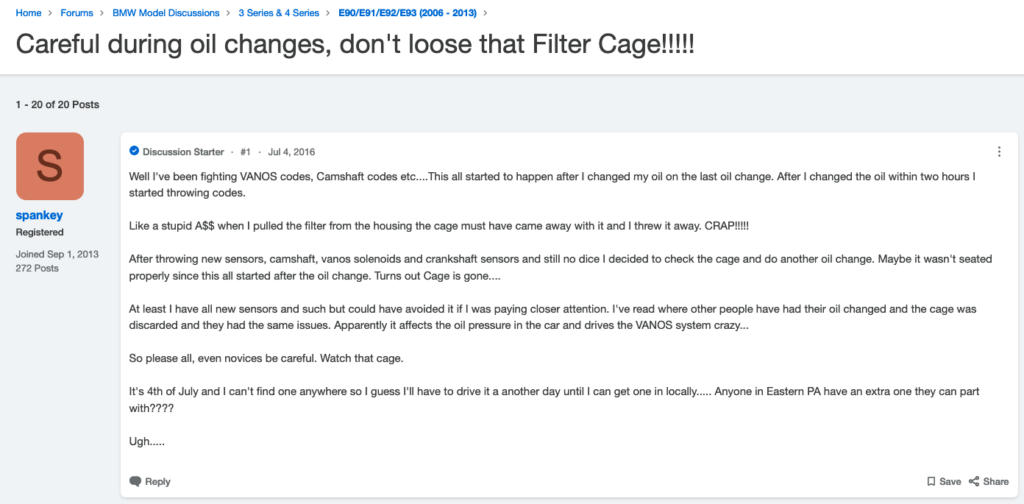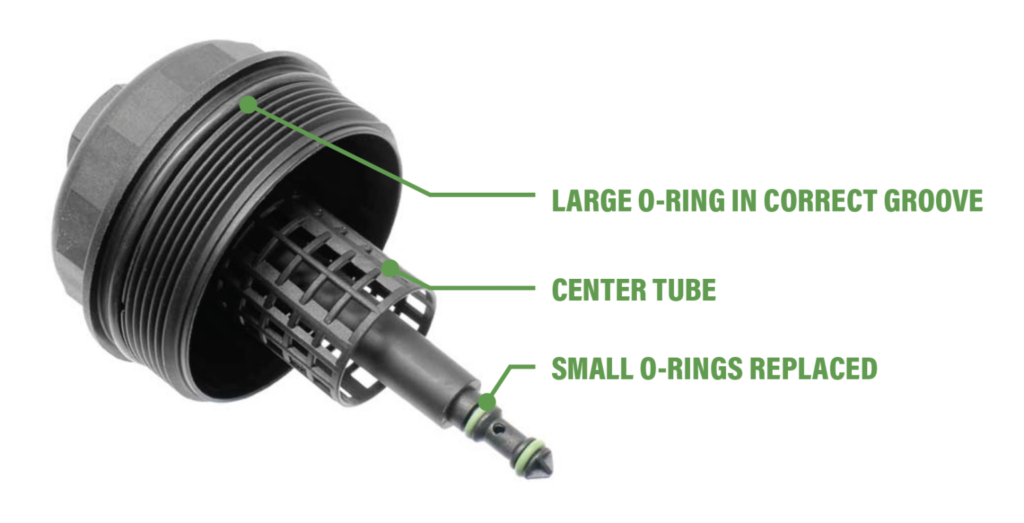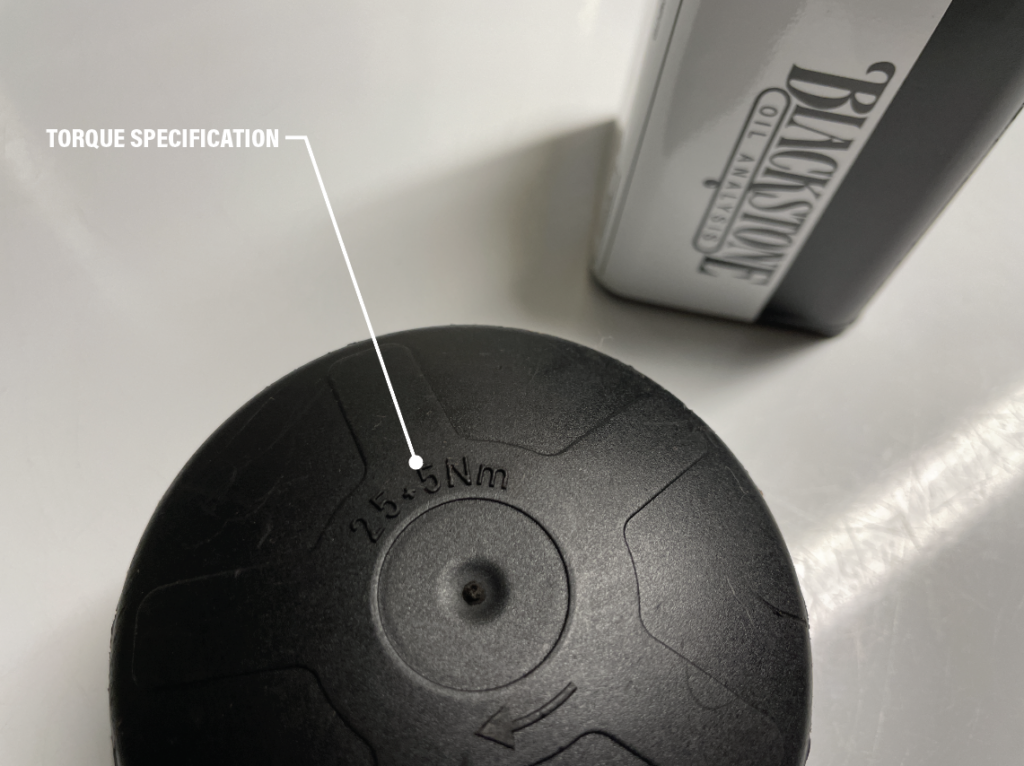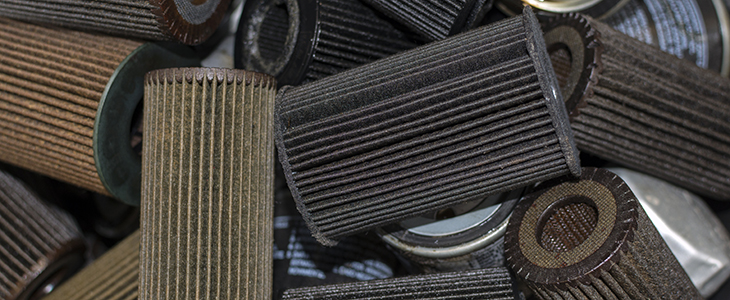
Cartridge Oil Filter Replacement: Missteps to Watch For
Cartridge Oil Filter Market Continues to Grow
Cartridge Oil Filter Replacement: Common Missteps
Misplaced O-rings
Misplaced O-rings are the most common misstep with cartridge oil filter replacements gone wrong. Most cartridge oil filter kits consist of the filter element and two O-rings– one large and one small. These O-rings need to be replaced with every oil change and there is a specific groove on the oil filter housing cap where the large O-ring is supposed to sit. Sometimes this O-ring is mistakenly placed into one of the cap threads rather than the correct groove. When this happens, the cap doesn’t seal properly with the housing when tightened, allowing oil to seep or spray out when under pressure. In addition to the engine’s mechanical issues that can result from oil starvation or oil pressure fluctuations, this scenario will result in a slick mess in the engine bay and could damage other components depending on the location of the oil filter housing. Always make sure that the O-ring is in the correct groove.
Accidental Removal of the Oil Filter Center Tube
The center tube of an oil filter, whether of the cartridge variety or spin-on canister type, is a critical part of the filtration process. In the case of cartridge oil filters, the center tube looks like a plastic, cage-like assembly that is attached to the inside of the filter cap. The assembly serves two purposes: The first is to give support to the flexible filter media when the filter is under pressure. The second, is to prevent oil from flowing right back into the sump rather than circulated through the engine as it should. This tube is not supposed to be removed from the cap during oil change service and as you can imagine, if it comes out with the old filter, failure to re-install can wreak havoc on an engine. Without the center tube, the filter will collapse under pressure and lead to oil pressure problems that could make the dash warning system look like a Christmas tree. It’s likely that the camshaft position sensor and variable valve timing will be affected, and the vehicle will run terribly.
Failure to Replace the Center Tube O-ring
This is another one that highlights the importance of the center tube. When changing the oil filter, it may be tempting to reuse the small O-ring on the end of the center tube if it looks like it’s still in good shape. Please DON’T DO IT! These nitrile O-rings are only meant to last for one oil change interval because after repeated exposure to extreme heat, nitrile loses its elasticity and begins to break down. If this O-ring fails when the engine is in operation, some oil will flow back to the sump rather than through the engine. This scenario could starve the engine of enough oil to cause internal damage. We know that the tiny O-ring can sometimes be a pain in the neck to get off, but it’s not impossible with the right tools. An O-ring pick makes the job very easy.
Over-tightened Oil Filter Housing Cap
Finishing Up the Oil Change
At the conclusion of the oil change service, it’s important to review the points that we just discussed and make sure each of the following boxes is checked:
- O-rings replaced and properly installed?
- Center tube securely in place in the cap?
- Cap tightened to manufacturer’s recommended torque setting?
If you’re confident that you haven’t missed anything, go ahead and start the vehicle up so you can observe the filter housing while the engine is on. Cartridge oil filter replacement is not a complex task, but it does require the installer to be a little more diligent than they would be if replacing a metal spin-on oil filter. We know that some of this discussion may sound silly, but we speak from a place of experience – these mistakes do happen, and professionals are not immune. It’s our hope that these pointers will help someone avoid a disaster under the hood, either for themselves or a customer.
Tags: BMW, Chrysler, Ford, N20, O-rings, Oil Change, Pentastar V6, Torque, Toyota, xDrive
Categories: Cartridge Oil Filters, Oil FiltersShare this entry
